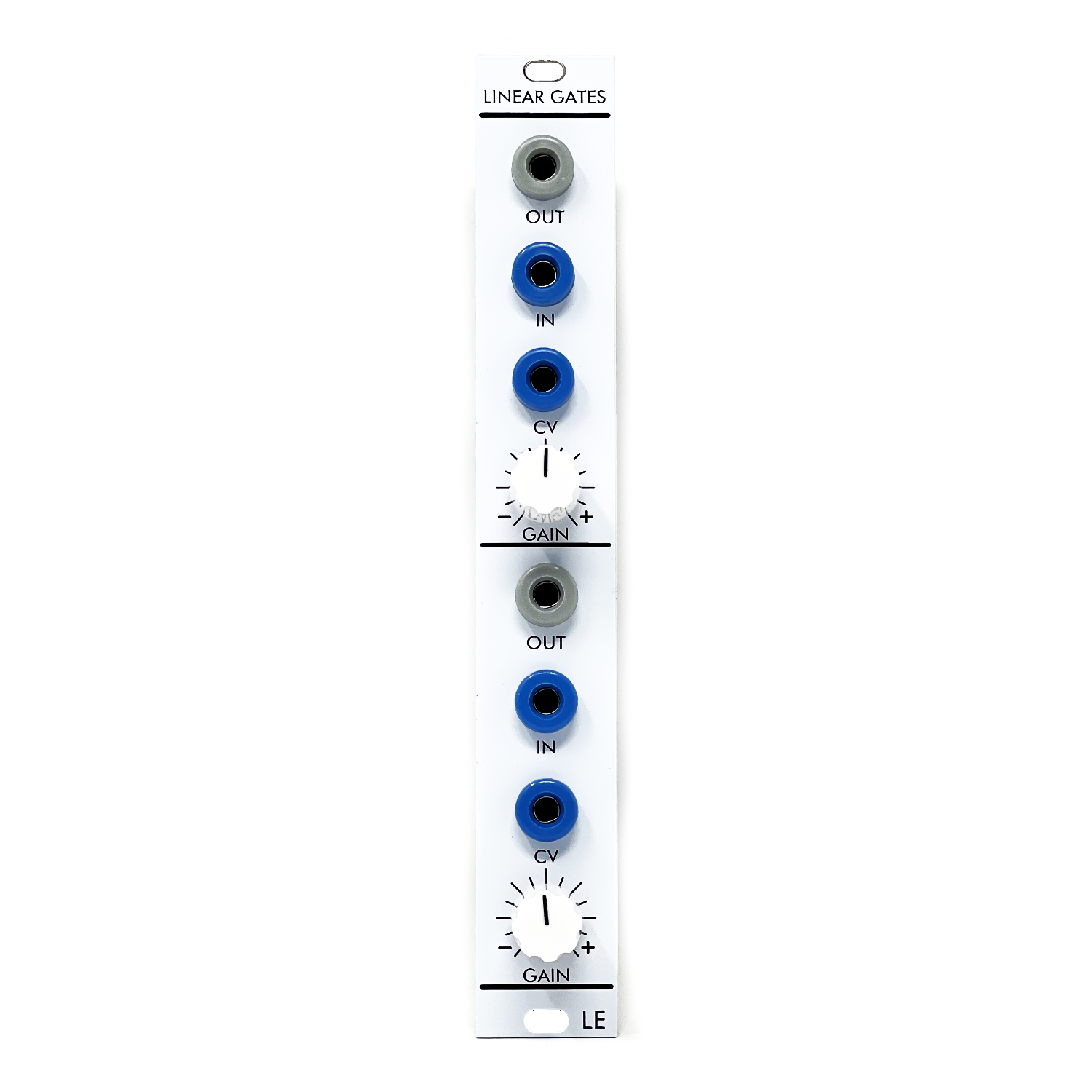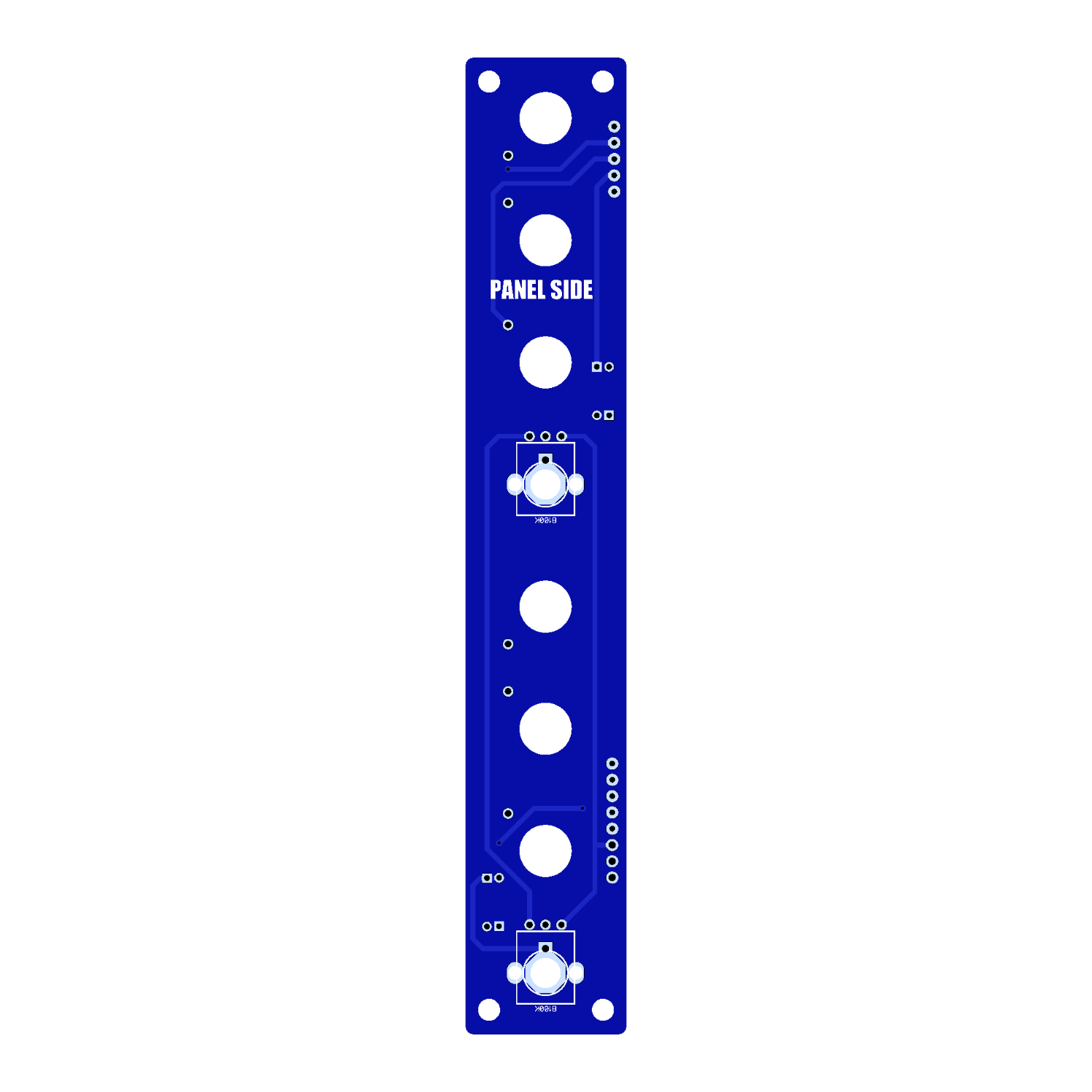Linear Gates – Dual Linear VCA Module
Linear Gates is a versatile dual VCA (Voltage Controlled Amplifier) module designed to bring dynamic control and flexible signal routing to your modular synthesizer setup. Each channel features a linearly responding VCA, ideal for both audio and CV processing, giving you precise control over modulation depth, amplitude shaping, and signal blending.
🔧 Features per Channel:
Signal Input and Output
Control Voltage (CV) Input for external modulation
Manual Bipolar Gain Offset – allows you to manually set gain when no CV is present or to offset incoming CV
Flexible Build Options: choose between 1 CV + 1 Offset control or a dual CV input configuration for expanded patching possibilities
🎛️ Why VCAs Matter in Modular Synthesis:
VCAs are the backbone of dynamic patching in a modular system. They let you:
Shape volume envelopes with precision (e.g., using an envelope generator to control audio amplitude)
Modulate modulation – adjust the amount of LFO or envelope going to another module
Create tremolo, gating, and automated level control
Mix or crossfade signals with voltage control
Whether you’re sculpting audio dynamics or controlling the flow of modulation in a complex patch, Linear Gates delivers clean, responsive, and musical results.
Voltage Controlled Amplifiers (VCAs) in a modular synthesizer are essential utility modules used to dynamically control the amplitude (volume) of audio or control signals based on a control voltage (CV). They’re simple in concept, but crucial in practice. Here's what they're good for:
🔊 1. Controlling Audio Volume
VCAs adjust how loud an audio signal is, based on an incoming CV.
Most commonly used with an envelope generator (like an ADSR) to shape the loudness of a note over time.
Example: You press a key → envelope triggers → envelope controls VCA → sound fades in and out naturally.
🎛️ 2. Modulating Modulation
VCAs can also be used on control voltages, not just audio.
Example: Use a VCA to adjust how much LFO is modulating a filter—giving you dynamic modulation depth.
🎚️ 3. Automated Mixing / Crossfading
Use multiple VCAs to mix several audio signals with CV control.
You can also use VCAs to create crossfades between different signals.
🌀 4. Tremolo and Rhythmic Effects
Feed an audio signal into a VCA and control it with an LFO → results in tremolo (volume modulation).
Control it with a sequencer or clock → rhythmic gating or chopping effects.
🧠 5. Essential for Patching Dynamics
Modular synths don’t have built-in dynamics or volume controls per voice—VCAs give you that control.
They're like volume knobs you can automate with voltage.
Linear Gates DIY Build Documenation:
LGE017 Main PCB Bill of Materials
LGE017 Main PCB Schematic
LGE017 Main PCB Designators
LGE017C I/O PCB Schematic (wiring diagram)
Mechanical Parts BOM generally required for building Low-Gain Electronics Modules
** 4U Modular is a term used for the format most commonly known as “Serge Format” or “Loudest Warning Format”. Out of respect for the ever growing format, 4U Modular is the easiest way to refer to it. More Specifically it refers to the panel height and mounting hole style. 4U Modular will patch up just fine with other 4U "Serge" formats such as "Random Source", but it will not mount in RS boats or Buchla Boats (or power off Buchla power for that matter). An info page about this will be added to the website soon to make this a lot more easy to understand.
Details:
PCB Size: 6” x 1”
Current Draw: TBD









